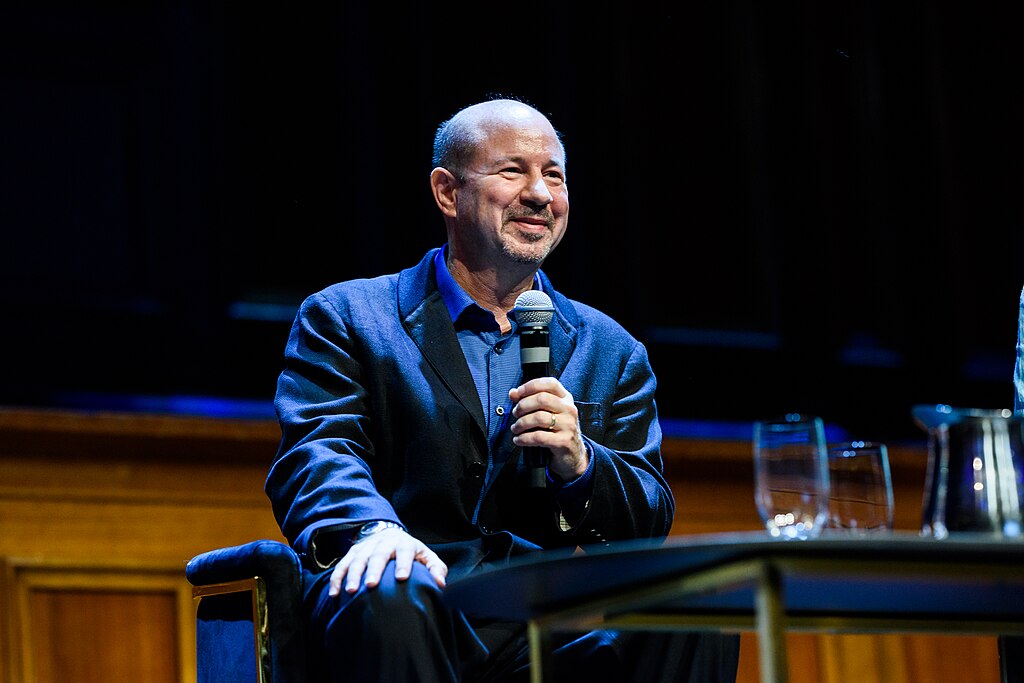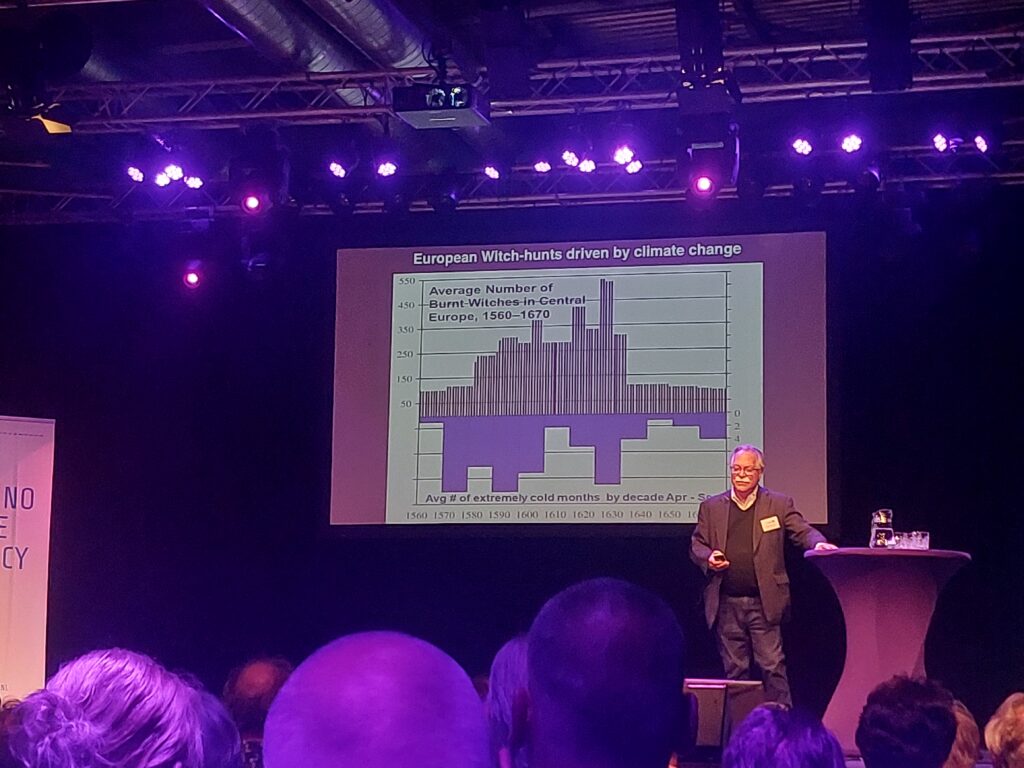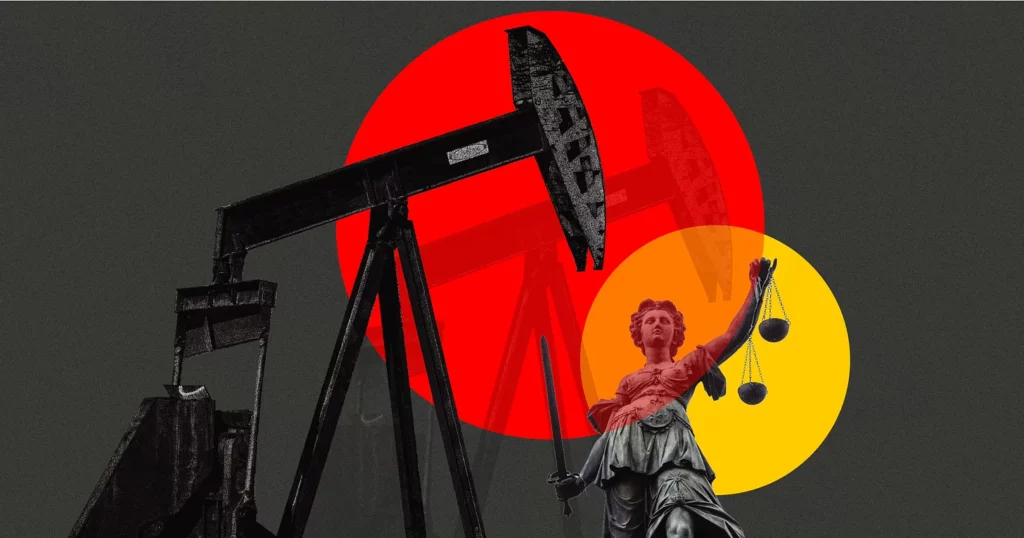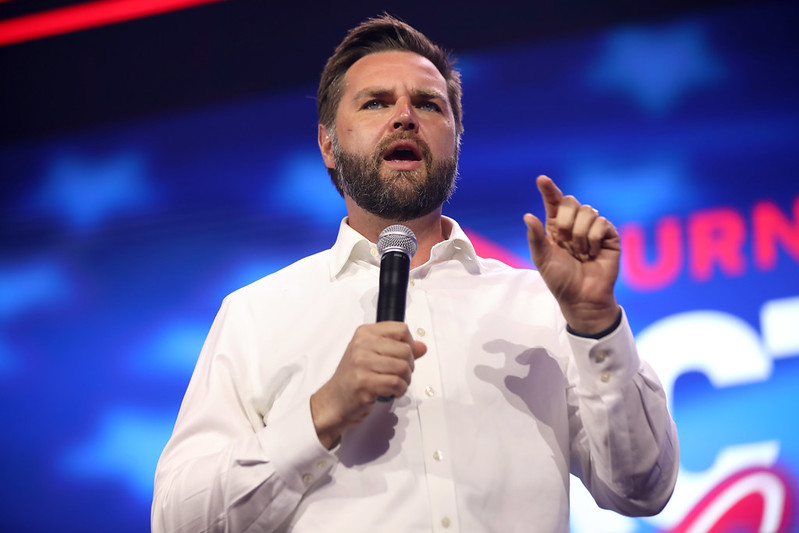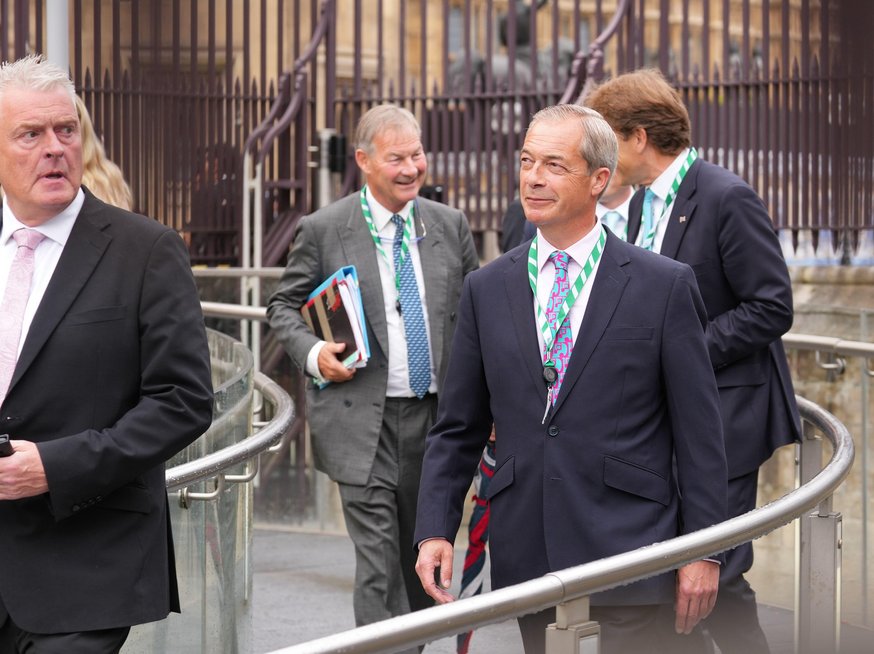In a victory for climate scientists, jurors in Michael Mann’s defamation case against Rand Simberg and Mark Steyn awarded Mann $1 million in punitive damages for defamatory comments made in 2012.
In a unanimous decision, jurors agreed that both Simberg and Steyn defamed Mann in blog posts that compared Mann to convicted sex offender Jerry Sandusky, former assistant football coach at Penn State University. They announced that Simberg will pay $1,000 in punitive damages and Steyn will pay the larger $1 million.
Standing in front of the courthouse smiling with his legal team after the verdict was read, Mann told DeSmog that he trusted the jury to see through the “smoke and mirrors” that the defense used during the trial.
“One million dollars in punitive damages makes a statement,” he said in an exclusive interview. “This is about the defense of science against scurrilous attacks, and dishonest efforts to undermine scientists who are just trying to do our job.”
Mann also noted that the trial was about defamatory statements made in an effort to discredit scientists “whose findings might prove inconvenient to certain ideologically driven individuals and outlets.”
“It’s about the integrity of the science and making sure that bad actors aren’t allowed to make false and defamatory statements about scientists in their effort to advance an agenda,” he added.
Peter Fontaine, one of Mann’s lawyers, told DeSmog he was “thrilled with the outcome.”
Climate Science on Trial
Mann sued Simberg and Steyn for defamation, but the trial proved to be about much more than statements that harmed the scientist’s reputation — the entire field and validity of climate science was under scrutiny.
In closing arguments, Mann’s lawyer John Williams compared the climate deniers in this case to election deniers overall. “Why do Trumpers continue to deny that he won the election?” he asked the jury. “Because they truly believe what they say or because they want to further their agenda?”
He asked the jury to consider the same question about Steyn and Simberg: Did they believe what they wrote was the truth, or did they just want to push their agenda?
Mann has “been attacked in all the ways that a climate scientist can be attacked,” Lauren Kurtz, the executive director of the Climate Science Legal Defense Fund, told DeSmog. “He’s been remarkably public about what’s happened to him, [and] willing to fight back in ways that other scientists haven’t necessarily wanted to take on.”
These attacks, however, take their toll, and Mann’s lawyers expressed hope that this case could help protect other climate scientists from abuse and harassment.
“Michael Mann is tired of being attacked,” Williams told the jury. “You have the opportunity to serve as an example to prevent others from acting in a similar way” to Simberg and Steyn.
An underlying current throughout this trial has been that climate denialism, like what the two defendants practice, isn’t really about the science. It’s more about politics and policy that drives organizations and individuals to “attack the science and confuse the public,” as Michael Mann wrote in his 2016 book, “The Madhouse Effect: How Climate Change Denial Is Threatening Our Planet, Destroying Our Politics, and Driving Us Crazy,” co-written with cartoonist Tom Toles.
In fact, as the jury heard when Williams cross-examined Simberg on Tuesday, Simberg hadn’t even read Mann and his coauthor’s two reports on the hockey stick graphs before writing his infamous 2012 blog post accusing Mann of scientific misconduct.
The Roots of Denialism
In both “The Madhouse Effect” and his 2021 book, “The New Climate War: Fighting to Take Back Our Planet,” Mann focuses on the tactics the fossil fuel industry has used for decades to delay climate action. These have included spending millions of dollars recruiting “contrarian scientists” and lobbyists to participate in a massive public disinformation campaign, “aimed at discrediting the science of human-caused climate change, including the hockey stick curve itself.”
These tactics have developed into to what Robert Brulle, a sociologist and visiting professor at Brown University’s Institute at Brown for Environment and Society, describes as the climate change “countermovement”: a broad, ever-evolving industrial and ideological campaign against climate action.
One technique deployed by the countermovement “to undermine the science of climate change,” Brulle writes, has been to “attack the veracity of climate science, as well as high-profile climate scientists.”
Brulle’s finding about the continually evolving face of climate denial were echoed last month in a new report from the nonprofit Center for Countering Digital Hate (CCDH), which studies abuse and harassment on the internet and social media.
“Old” denialist tactics focused on simply denying the existence of human-caused climate change, but what CCDH calls “new climate denial” uses “attacks on climate science and scientists,” to create doubt and uncertainty about their research findings.
New denial has been on full display throughout this trial.
One of the defense’s expert witnesses, University of Pennsylvania statistician Abraham Wyner, focused on raising doubts about climate science, spending hours on the witness stand explaining why he thought that Mann and his colleagues used manipulative techniques to produce their infamous “hockey stick” graph of rising global temperatures.
Meanwhile, other witnesses seemed more intent on challenging Mann’s character.
Judith A. Curry, a climatologist and former university professor, was asked by defense attorney Victoria Weatherford about the many times she testified before Congress on climate issues. Curry began describing a hearing during which she and Mann were both testifying, calling Mann’s remarks to Congress “mostly self-promotion.”
Curry told the jury that she has a “small climate footprint,” unlike the “jet-setting celebrities calling me a climate denier.” (In his closing argument, Steyn made a similar spurious argument about Mann, asserting that “the only communities he cares about [are] celebrities, climate scientists, and politicians.”)
Weatherford repeatedly asked Curry and other witnesses about the “tenor of the [climate] debate” in the late 2000s and early 2010s, when hackers published countless stolen emails of scientists, including Mann’s. The release of the hacked emails was designed to make climate scientists appear to be conspiring to exaggerate the evidence about global warming.
But in the trial, these questions about “tenor” around the time of so-called “Climategate” seemed designed to legitimize attacks on Mann.
Roger Pielke Jr., another witness for the defense, called Mann “thin skinned” and “quick to attack.”
Much of the defense testimony seemed designed to “victimiz[e] the victim,” Williams said in his closing argument. For those who oppose climate action, “Michael Mann has become a huge target.”
This strategy of “victimizing the victim” not only shifted days of trial away from Simberg and Steyn’s articles comparing Mann to Sandusky — it also gave the defense an opportunity to put the hockey stick chart, and climate science more broadly, on trial.
As most know today, Mann’s hockey stick graph, which he first created in 1998 with scientists Raymond Bradley and Malcolm Hughes, challenged the conventional wisdom at the time that climate change was a natural phenomenon. The graph proved that the rise of global warming was man-made from burning fossil fuels.
Steyn has said that Mann’s hockey stick graph, was “almost laughably fraudulent.” But the science behind the hockey stick graph has been continuously upheld as accurate, withstanding challenges from scientists around the globe over the past quarter century since it was originally published. It remains among key findings that prove burning oil, coal, and methane gas is the primary driver of the climate crisis.
In his closing arguments, Williams pointed out that Bradley, who testified for Mann, said of the graph, “They huffed and they puffed and couldn’t blow it down.”
“If the original hockey stick curve had indeed been wrong, we would know by now. If assertions of global warming were wrong, we would know by now,” Mann writes.
As the moment when the judge would send the case to the jury drew closer, Simberg’s lawyer, Weatherford, and Steyn, who represented himself, offered their closing arguments. Speaking directly to the jury, though glancing regularly at Mann and his lawyers, Weatherford repeatedly challenged Mann’s case and stated that “Rand [Simberg] was right” to question Mann’s scientific credibility.
Steyn, on the other hand, at times appeared more intent on bitterly attacking both the U.S. justice system — Steyn, who is Canadian, claimed that “in my country,” Mann’s case would have been thrown out — and Mann himself, calling the scientist a “vanity plaintiff” and a “humbug with no case.”
The judge gave Williams a few minutes to rebut the defense’s closing arguments. In a telling moment, the veteran lawyer urged the jury to consider how punitive damages could serve not just as punishment for Simberg and Steyn’s comments, but, more importantly — and perhaps more constructively — as a deterrent for others pursuing a climate denial strategy founded on baseless personal attacks against scientists who disagree with them.
Williams’s voice rose as he began to exclaim to the jury that “these attacks on climate scientists have to stop.” But his statement drew immediate objections from Weatherford and Steyn.
After a brief conference, Judge Irving sustained the objections, and ordered the jury to disregard Williams’s comments. “This case is not about climate science,” the judge admonished.
In a literal sense, the judge was correct: Defamation laws say nothing about climate change or climate science or climate scientists.
But it is also clear that, time and time again, Simberg and Steyn succeeded in shifting the focus of the trial away from their rhetoric that compared Mann to a convicted child molestor, and instead toward a strategy of questioning and undermining Mann’s conclusions about climate science.
Regardless of the jury’s verdict in Mann’s favor, this strategy of attacking scientists and putting science itself on trial looks set to continue.
In the end, Simberg and Steyn’s comparison of Mann to child molester Jerry Sandusky was not just inappropriate but also factually incorrect — and now a court found that it harmed his reputation. Looking back on recent history, the attacks on Mann could be compared with attacks on Anthony Fauci, the lead scientist in former President Donald Trump’s White House COVID-19 Response Team, who faced a barrage of vaccine skeptics and, in many ways, became a villain whose demonization served as a tool to undermine an entire movement.
Like Fauci, Mann is a truth teller in the face of denialism and misinformation.
Yet decades of denial, delay, and disinformation about climate change have made clear that simply letting facts speak for themselves — exposing the truth, and assuming that will be enough to spark action — is insufficient.
“We would like to live in a world in which the facts speak for themselves, but unfortunately that’s not always the case,” Kurtz, of the Climate Science Legal Defense Fund, told DeSmog.
As a result, Kurtz said, “It’s not surprising that scientists are doing more to fight back. Michael Mann, I think, is most prominent among those who are fighting back, but I think there are a lot of other scientists who have decided to become more public about what they’ve experienced or tried to be more assertive in the ways that they challenge some of these totally baseless accusations.”
The fact that Mann has continued to make his case and defend the integrity of climate science could have a galvanizing effect, Kurtz said.
“I’ve heard from scientists that it’s very heartening that Michael Mann is taking a stand against this.”
This article was updated on Thursday, February 8, 2024, at 8:06 pm ET with comment from Mann and Fontaine.
Subscribe to our newsletter
Stay up to date with DeSmog news and alerts

